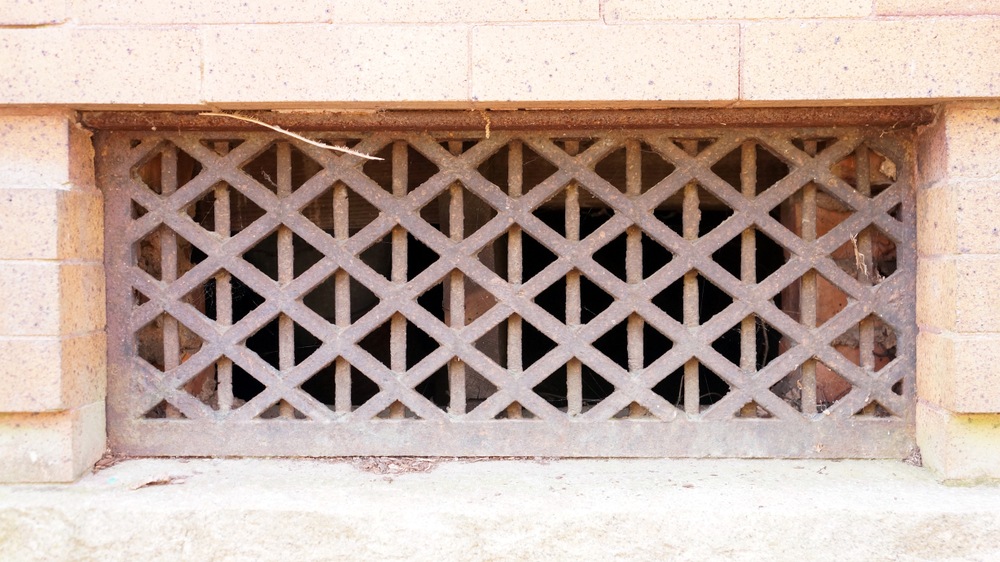
Choosing between an encapsulated vs ventilated crawlspace is a big decision for homeowners. This post will give you the knowledge to make the right choice for your home and budget. We’ll compare both options, looking at their pros, cons, and costs.
This choice is about protecting your home’s value, health, and comfort. A good decision now can save you money and stress later. Let’s explore the world of encapsulated vs ventilated crawlspaces.
Crawl spaces became common under American homes in the 19th century. The Southeast, with its high moisture and termites, needed a way to raise houses. Builders began lifting houses to combat these problems.
In the mid-20th century, crawl spaces boomed due to lower construction costs. Vented crawl spaces became the standard, thanks to building codes. Vents allowed air to circulate, aiming to prevent wood rot and mold.
This worked in dry climates, but humidity remained a problem in areas like the Southeast,
Venting can sometimes reduce humidity. However, introducing outside air can worsen humidity in humid climates.
Hot, humid air entering a cool crawlspace creates condensation. This raises humidity levels, potentially fostering mold growth and attracting pests. These are serious health concerns for any home.
According to information about the stack effect, this warm, polluted air rises into your living space, impacting indoor air quality. This can contribute to poor indoor air and potential health problems.
Encapsulation addresses humidity and pest problems by sealing the crawlspace. It often includes a vapor barrier and insulation. Choosing between encapsulated vs ventilated crawl spaces involves carefully evaluating the advantages of a conditioned crawl space.
Before making a decision, it’s important to explore all aspects of encapsulation. Understanding the benefits of an encapsulated crawl space is crucial.
Addressing crawl space problems can be expensive. Costs increase when switching from a ventilated to an encapsulated crawl space. Consider necessary repairs like foundation cracks, vent fixes, and moisture control when budgeting.
Ignoring a humid crawl space leads to costly issues down the road. These issues impact indoor air quality and your home’s structural integrity. It’s more than just home repair; it’s a long-term investment.
Encapsulation is more expensive upfront. However, neglecting your crawl space can negatively impact resale value. With ventilation, you risk mold, pests, wood rot, and poor indoor air quality.
| Feature | Ventilated Crawl Space | Encapsulated Crawl Space |
|---|---|---|
| Initial Cost | Lower | Higher |
| Long-Term Costs | Potentially higher due to water damage, pest control, and higher energy consumption. | Lower due to fewer repairs and lower energy bills. |
| Maintenance | Higher (vent cleaning, pest control, etc.) | Lower (dehumidifier maintenance). |
| Return on investment (ROI) | Lower | Higher if properly maintained. |
Switching from a ventilated to an encapsulated crawlspace creates a healthier, safer space. It manages crawl space repair needs for better ROI. Most waterproofing and crawl space encapsulation professionals recommend encapsulation.
A conditioned crawl space offers health and safety benefits, protecting property value. It avoids issues like indoor allergens, high utility costs, and excess moisture that causes structural damage like rotting joists and foundation problems.
The best choice depends on your climate and home. Encapsulation minimizes moisture problems in humid climates. Ventilation may be suitable for dry regions but ineffective against high humidity levels elsewhere.
Consider your regional climate and specific needs like musty smells or current humidity level before making a choice.
The main downside is the upfront cost. It’s a significant investment. Sometimes it may not be deemed worth it based on the specific circumstances and preferences.
Improper installation compromises performance and might require additional maintenance or repairs. If the encapsulation process isn’t followed correctly, spray foam insulation and other materials may not work efficiently.
Again, location is key. Consult a crawl space repair expert to assess potential future issues. They can determine if preventive measures are worth the investment.
When comparing encapsulated vs ventilated crawlspaces, encapsulation often provides a superior solution in humid climates where excessive moisture and high humidity are common. Carefully weigh all factors before making a decision.
Ventilation might appear cheaper initially, but long-term costs from damage can be significant. Encapsulation requires a larger upfront investment but minimizes expensive repairs related to moisture.
Consider whether ongoing maintenance with ventilation is preferable to a larger upfront cost for encapsulation. If correctly installed, encapsulation offers better environmental control, protecting your home’s integrity and improving air quality. Encapsulated crawl spaces can also lead to warmer floors and energy savings thanks to the increased air sealing between your crawlspace and living space.